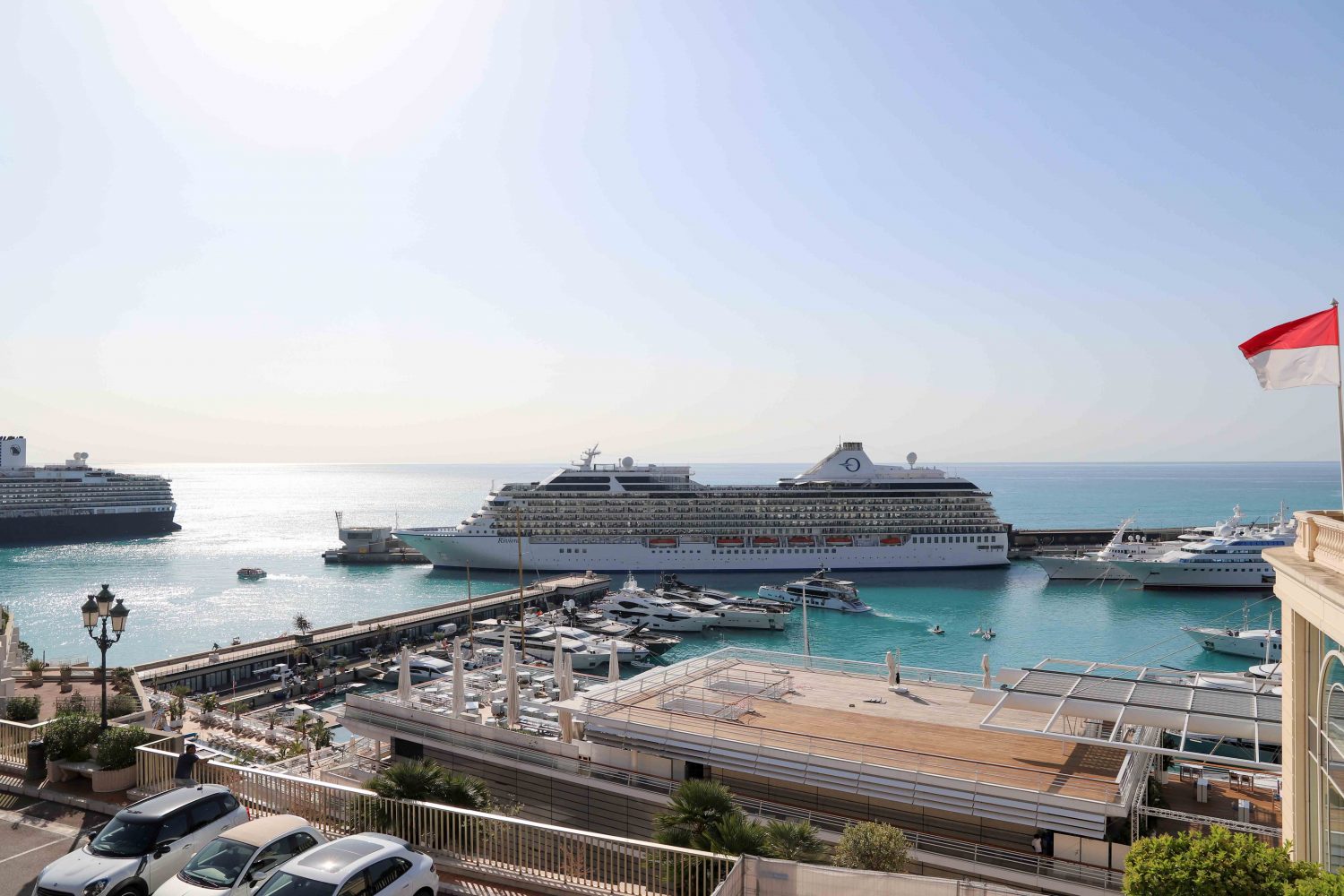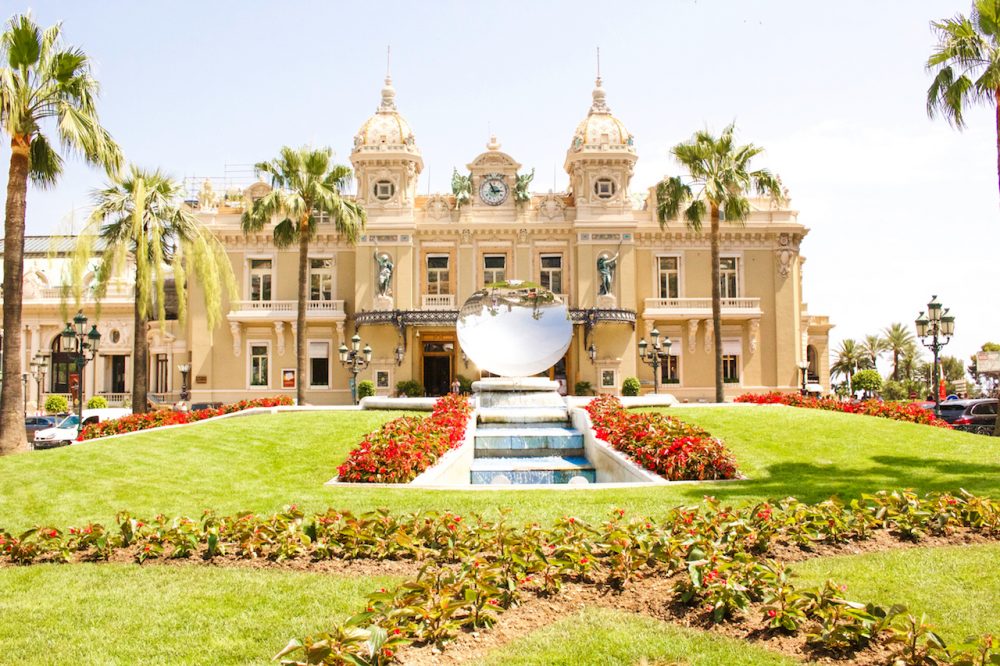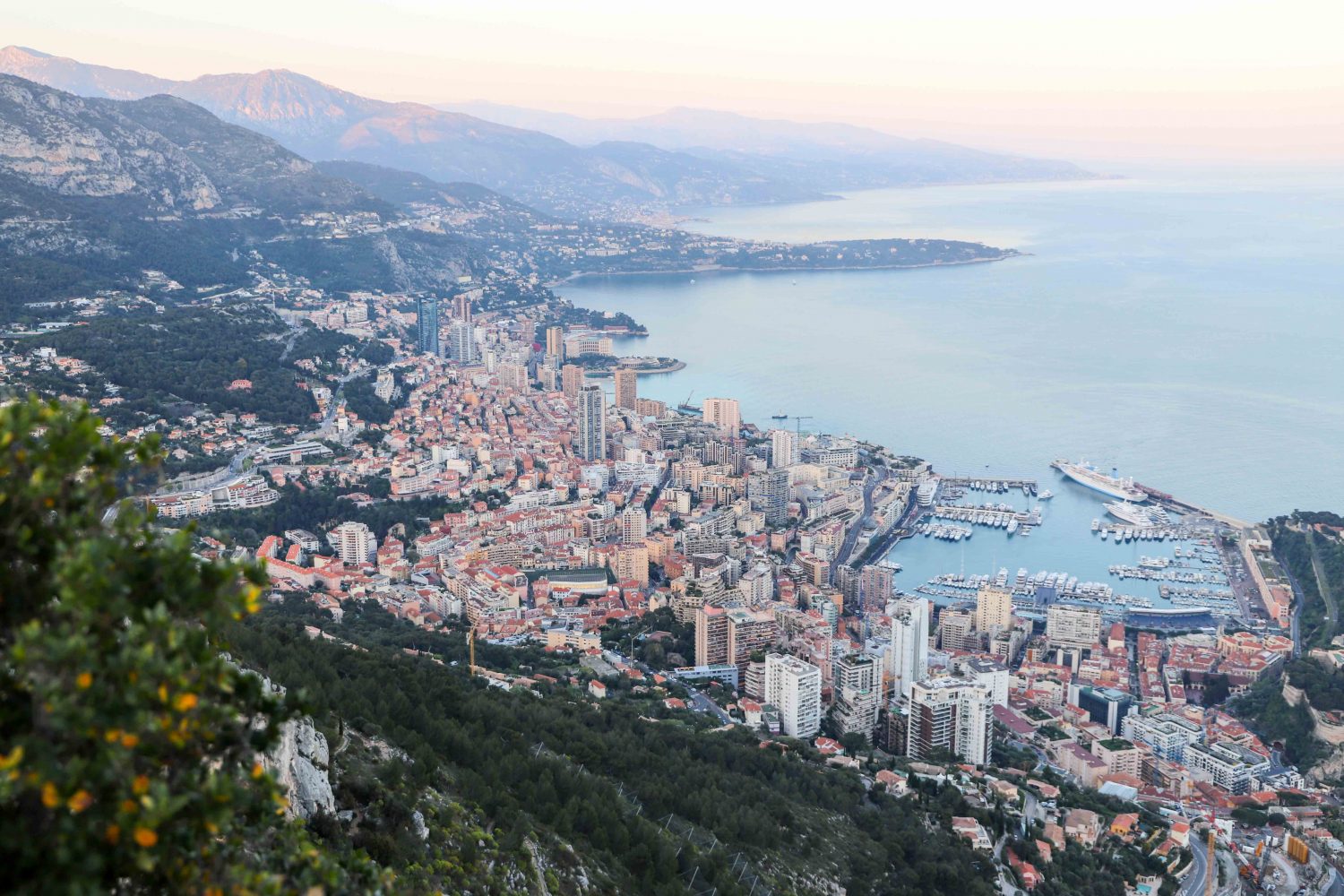The history of Monaco is long and rich and has made Monaco into the popular and unique country it is today.
Monaco is 0.8 square miles in size, making it the smallest state in the world after Vatican City.
It is beautifully situated at the Mediterranean sea, surrounded by France on three sides, and with a large mountain at its back.
Not only is Monaco unique due to its size, but it is also located on rocky and steep hills, that eventually drop into the Mediterranean, making building here quite tricky. Yet, still, Monaco has been able to become the most densely populated country in the world with 36,000 people occupying an area of just around 2 square kilometers, which equals to around 18,000 people per square kilometer.
Despite being so small, Monaco is a country that has built a reputation for itself and become famous all over the world.
Due to its location, it has a pleasantly mild climate all year round, with warm summers, and relaxing breezes from the Mediterranean. It is divided into four neighborhoods: Monaco-Ville, La Condamine, Monte-Carlo, and Fontvieille.
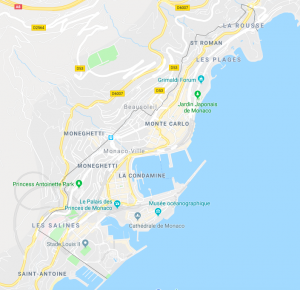
But what is it that has made Monaco to what you know it as today? In this post, we’re going to the bottom of the history of Monaco, to learn about everything that has contributed to shaping this small country, from its birth, until today.
The history of Monaco stretches far back to approximately 400,000 BC where it served as a shelter for the area’s early humans from the end of the Paleolithic period.
Evidence of this has been found in a cave in St.Judist’s Gardens. It has been found that the first permanent settlers of Monaco were the Ligures who lived in caves and in the mountains.
The Ligures emigrated from the Genoa, Italy, and weren’t native inhabitants of Monaco.
The ancient Ligurian language which is assumed to be Indo-European which the Ligures spoke, isn’t directly connected to the Italian dialect which was spoken by the modern inhabitants which derived from Liguria. The Ligurian language cannot be tied to the Monegasque language, either.
The Ligurians, which lived in the mountains of Monaco, and described as mountain people are described as people who were accustomed to hard work and an exemplary frugality – two traits by which Monegasque citizens are known for today.
Due to the history of Monaco being greatly influenced by its location by the Mediterranean, the port of Monaco was most likely the route of access to the Ligurian population.
History of Monaco: Greek colonization
There have been a number of theories of the name Monaco and its origin
A theory is that the name Monaco comes from a Ligurian tribe known as Monoïkos, a tribe which inhabited Monaco in the 6th century B.C. Another theory is that the name Monaco origins from the Greek. The port of Monaco has in the history been associated with hero Herakles, also known as Hercules by the Romans. The hero Herakles was often connected with the expression “Herakles Monoïkos”, meaning Herakles alone. This is the theory that has gotten the most support since the name of the port in Monaco is Port of Hercules, which supports this theory.
The Romans are the ones that are thought to have developed the ancient path that went from Spain to Italy.
In the 6th-century BC, the so-called Phocaeans which came from Massalia, modern-day Marseille created the colony of Monoikos. The name Port Hercules was used for the ancient port of Monaco, and Monoikos meaning “Single House” could reference Hercules or his temple, or possibly even the community of Ligurians which lived isolated among the rocks of Monaco.
It is believed that Hercules passed through the area and the port of Monaco, thus Monaco’s connection to the name Hercules.
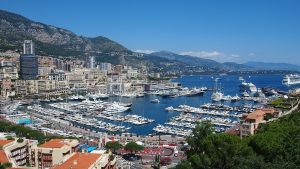
Moreover, the name Monoikos enforces the ideas of sovereignty and self-reliance, which was present in the isolated community of inhabitants.
History of Monaco: Romans, dark ages, and beyond
Monaco worked as a stopping-point for the infamous Julius Caesar after the Gallic Wars and fell under Roman control as part of the Maritime Alps province, also known as Gallia Transalpina. Monaco remained under Roman control for a long time, but when the Western Roman Empire collapsed in 476, Monaco was raged by Saracens and barbarian tribes instead. The city then came under the rulership of Odoacer until his fall, which leads to Monaco being taken over by the Ostrogoths in the late 5th century
Hercules is believed to have had a temple in Monaco, and he is also believed to have driven off everyone who lived there. However, the temple of Hercules has not been found.
In the middle of the 6th century, Monaco was recaptured by the Romans, which was under the rulership of Justinian.
It remained under Roman rulership until the 7th century when it was captured by the Lombards.
Following, Monaco once again changed hands, going from the Lombards to the Franks.
After all of these events in the history of Monaco, and a number of different powers invading and taking the rulership of Monaco, the land was almost completely depopulated. Despite this, in 975, the Saracens were expelled from Monaco, and the area was reclaimed by the Ligurians who had previously controlled and lived in the area.
1191 is an important year in the history of Monaco as it was the year when the Holy Roman Emperor Henry VI granted suzerainty over Monaco, all the way to the city of Genoa, the town which was the native home of the Ligurians, tying together two important cities for the Ligurians.

On June 10th, 1215, a detachment of Genoese Ghibellines which was led by Fulco del Cassello began constructing a fortress on top of the Rock of Monaco.

Since the fortress was built on the Rock of Monaco, the place where the old town of Monaco is situated, and the place where the Prince lived, this event is often referred to as the start of the modern history of Monaco.
The Ghibellines built the fortress with the intention of making it a strategic military stronghold which would not only be the center of control, but also something that would give them control over the area known as Monaco. Following, the Ghibellines created a settlement around the base of the Rock. The new rulers now needed to attract new residents to Monaco from Genoa, and in order to attract people, they offered land grants and tax exemption to new settlers.
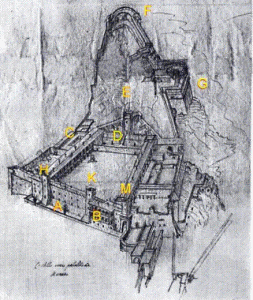
As a result of this, Monaco soon established itself as an important city, which lasted for three centuries until new events would change the circumstances for Monaco and its rulership. During the time, it was contested by rival political factions.
History of Monaco: Rise of the Grimaldis
The Grimaldi family has had a huge impact on the history of Monaco. And the reason that most people know about the Grimaldis is due to the simple fact that they are currently writing the history of Monaco through their rulership.
The Grimaldis descended from Otto Canella which was an ancient and prominent Guelphic Genoese family. The Grimaldi took their name from Otto Canella’s son Grimaldo.
A part of the Grimaldi family took refuge in Monaco because of the strife between the Guelphs and Ghibellines in Genoa. The Grimaldis didn’t come alone, though, as they were accompanied by other Guelphic families.
In 1297, the Rock of Monaco, on which the detachment of Genoese Ghibellines had built a fortress was seized by Francesco Grimaldi. This came to become the start of the Grimaldi dynasty, led under the sovereignty of the Republic of Genoa.
Following, the Grimaldis, lead by the Grimaldi member Charles 1st expanded their territory, and in 1346, they acquired Menton, closely followed by Roquebrune which was acquired in 1355.
On January 8th, 1297, an event in the history of Monaco which is quite well-known took place.
François Grimaldi, who originated from a powerful Guelph family in Genoa gained entry to the castle by being disguised as a monk.This occasion is still to this day commemorated by the two monks, flourishing swords, depicted on the Grimaldi coat of arms.

Monegasque ships, under the command of Carlo Grimaldi, participated, together with ships from France and Genoa in 1338 in the English Channel naval campaign.
Returning, they brought plunder from the sack of Southampton back to Monaco, which helped contribute to the success of Monaco.
As mentioned, the history of Monaco would come to continue to be affected by the Grimaldi family as Charles Grimaldi, known as Charles I successfully reinstated the House of Grimaldi on 12 September 1331, after having been expelled from Monaco thirty years later.
As a result of this event, Charles 1st has come to be known as the founder of the principality of Monaco.
But Monaco’s complete independence wasn’t immediate. It took until 1489 when Monaco would gain complete autonomy from French control. This as a result of Lambert Grimaldi convincing King Charles VIII of France to grant the principality of Monaco its independence.
The sovereignty of Monaco was officially recognized in 1512 when King Louis XII of France signed a document, but that document also declared a perpetual alliance with the king of France, which helped Monaco flourish under the protection of France.
For political reasons, Monaco was placed under the protection of Spain in 1524, and this came to caused financial difficulties for Monaco which would last for a long time. The reason was that the occupying military forces of Spain were completely supported by the Monegasques.
Honoré II, Prince of Monaco further secured Monaco’s independence by making it independent from Spain in 1633. Moreover, he also made Monaco independent from France and Louis XIII through the Treaty of Péronne in 1641.
Since then, the house of Grimaldi has ruled Monaco uninterrupted from other states to this day, with the exceptions of 1789 to 1814, when it, under the French revolution fell under French Rule as part of the département of Alpes-Maritimes.
History of Monaco: Connections with the Kingdom of Sardinia
In 1814, the principality of Monaco was re-established, but under the protectorate of the Kingdom of Sardinia. This by the Congress of Vienna in 1815.
Monaco would remain in this protectorate until 1860 when Sardinia ceded to France by the Treaty of Turin, the surrounding county of Nice, which included Monaco.
On February 2nd, in 1861, Monaco was under the leadership of Charles III. On that date, Charles gave up Monaco’s rulership of Menton and Roquebrune which Monaco previously had taken control of, to France. He did this as an exchange for total independence from French political influence and four million francs. Losing control over Menton an Roquebrune meant that Monaco shrunk roughly 95% in size.
The sovereignty was confirmed by the Franco-Monegasque Treaty in 1861.
History of Monaco: 19th century
Since the annexation of Menton and Roquebrune, the military defense of Monaco has been a responsibility of France.
In 1863, the well-known Casino of Monte Carlo was opened. The opening of the casino was organized by the so-called Société des Bains de Mer de Monaco. This company also ran the Hotel de Paris.
The Société des Bains de Mer de Monaco played a major role in the History of Monaco at that time economically, because the huge taxes paid were invested into the infrastructure of the country, which helped develop Monaco and give it the means necessary to grow.
Monaco’s economy continued to grow as a railway as built along the French Riviera, and most importantly, from Paris, that dramatically increased the number of aristocrats going to the French Riviera including Monaco.
In July 1919, Monaco signed the Treaty of Versailles, which said that Monaco would be under the protection of France, and this is a relationship between Monaco and France that still exists to this date.
History of Monaco: the 20th century
The 20th century has been an important century in the history of Monaco, and it was during this period that Monaco really started to turn into what it is we know it as today.
The prince of Monaco has been an absolute ruler of Monaco since its founding, and Monaco has been an absolute monarchy, but in 1910, the so-called Monegasque Revolution took place, which forced the Prince to proclaim a constitution in 1911.
The prince at the time, which was Prince Albert I, proclaimed the constitution, but 6 years later, in 1917, it was modified. Some years later, in 1933, the constitution also came to change by Prince Louis II, with further reforms being introduced by Prince Rainier III in 1962.
In 1949, thePrince Rainier III accedes to the throne of Monaco. He was then succeeding his grandfather, Prince Louis III. Rainier came to run the principality of Monaco for 56 years of the history of Monaco – a period that is sometimes referred to as Prince Rainier III’s 56-year reign.
The same year, as Rainier accedes the throne, the principality of Monaco becomes the 47th member state of UNESCO.
Moreover, in 1954, a convention is developed together with France, created for mutual cooperation and assistance in administrative affairs, including the institution of a sales tax (VAT), as well as the founding of a television channel within the country, known as Telé Monte-Carlo.
In 1956, a huge event in the history of Monaco took place, which drew an incredible amount of publicity to Monaco and helped put the small state on the world map.
On that year, Prince Rainier III married the American actress Grace Kelly. It is said that the two complemented each other very well when it came to developing Monaco and allowing it to grow, as Prince Rainier III brought economic prosperity to the area, and his wife had a huge impact in promoting the nation, building its reputation, and bringing glamour to it – something that has contributed to the status the small state has today.
The two had three children, Caroline, Albert, and Stephanie.
But in 1982, Grace Kelly died in a tragic car accident after having driven off the road when driving the twisty mountain roads of Monaco. The world was in shock, to say the least, and Prince Rainier III continued to rule Monaco and become a well-respected monarch.
In 1966, the state of Monaco (the Monegasque State) became a major shareholder in the Société des Bains de Mer – a company that helped generate lots of tax to the state, which helped finance parts of the infrastructure in Monaco.
In 1962, Monaco was in a crisis with France because of the fact that they refused to impose taxes on its residents and international businesses.
The outcome was a compromise between Monaco and France which meant that French citizens who had been residents of Monaco for less than five years had to pay taxes according to French tax rates. Companies which had more than 25 of its business outside of Monaco also had to pay French taxes.
This dispute also lead to the update of the constitution of the principality which was more liberal. The creation of the new constitution included a number of changes, including the fact that the National Council would be restored.
The new updated constitution also said that the executive power is under the authority of the reigning prince.
The succession of the throne is also stated, where it is passed on to the direct and legitimate descendants of the prince. In this was also stated that male descendants take precedence over females.
Moreover, the constitution also said that the prince nominates a Council of Government which would consist of the following posts:
- minister of state
- three government councilors- one councilor finance and economy, one counselor for the interior, and one councilor for works and social affairs.
The minister of state is a French Citizen and not Monegasque, and it is an individual who has been appointed by the prince and selected for a three-year term. The individual selected by the prince is selected from a group consisting of senior French civil servants, which in turn have been selected by the French government.
The minister of state has a number of responsibility areas, which includes being in charge of foreign relations, the police and the Council of Government, direct executive services, and maybe most importantly, working as the prince’s representative
The representatives of Monaco who are in the National Council are selected on a 5-year basis through direct vote based on proportional representation.
In 1962, the new constitution gave women the right to vote in Monaco. A giant leap forward for the small state in terms of gender equality.
The new constitution also abolished the death penalty.
In 1975, the largest hotel in Monaco was opened, named the Loews Hotel. Today, that hotel is known as Fairmont Monte Carlo, an iconic hotel in the history of Monaco.
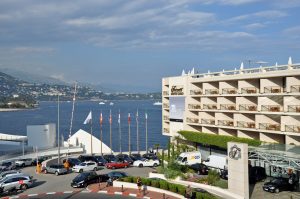
The world war II was a major event in the history of Monaco, just like it was for every other city along the French Riviera. The then current prince, Louis II was strongly pro-French, but despite this, he did his very best in keeping Monaco neutral during the war. The prince did, however, support his old army colleague, Marshal Philippe Pétain through the Vichy French government
But despite Louis II’s attempts of keeping the municipality neutral, the nation too great damage. partly because of the indecisiveness of the prince, but mainly because many of the Monaco inhabitants supported Benito Mussolini and his fascist regime since a large portion of the inhabitants was of Italian descent.
In 1942, the history of Monaco took yet another turn as the Italian Army invaded and occupied Monaco. The Italian army set up a puppet government, and shortly thereafter, in September 1943, Mussolini’s regime fell, which instead lead to the German Army occupying Monaco and became deporting the Jewish Monegasque population.
Prince Louis of Monaco secretly ordered the Monaco Police to warn the people Gestapo planned to arrest.
Finally, on the 3rd of September 1944, Monaco was liberated as a result of German troops retreating, opening up for a new part in the history of Monaco.
The heliport of Monaco was built in 1981, bringing Monaco closer to the rest of the French Riviera, and just minutes away from the Côte d’Azur Airport in Nice.
Furthermore, Monaco’s stadium known as the Louis-II Stadium was inaugurated in 1985. The stadium worked as an arena for a number of sports, and today, you can see (among much more) football matches being played there.
Another huge event in the history of Monaco takes place in 1993 when Monaco becomes a member of the United Nations with full voting rights.
In November 1999, Monaco’s underground railway station, built solely in the mountains was inaugurated. The inauguration of the underground railway station meant that 3.6 hectares of land that has been previously used for the train rails were now free for development.

History of Monaco: The death of an iconic and loved prince
On April 6th, in 2005, Prince Rainer III died after A 56-year reign. The current prince of Monaco, Albert II then acceded to the Throne.
Prince Rainier is an icon in the history of Monaco. In 56 years, he was able to turn Monaco into a center of business and finance, build a reputation for luxury, make it a popular tourist destination, and make the economy of Monaco flourish.
Rainier also dramatically improved the standard of Monaco through a number of infrastructure investments and improvements, such as the enormous Port Hercule transformation, which enabled more and larger ships to enter thus making Monaco more attractive to access by boat. Rainier is also credited for building Monaco’s economy and making it more sustainable and not as dependent on gambling, making the revenue from gambling go from 9 percent to three percent today, as a result of creating new income sources, with the main one being finance and banking.
Albert succeeded his father Rainier III in 2005. Prince Rainier, in turn, had acceded to the throne following the death of his grandfather, Prince Louis II, in 1949.
History of Monaco: 21st century
The 21st century part of the history of Monaco is a part where a series of events took place that still can be seen today to a larger extent.
In 2000, the Grimaldi Forum, which is still standing today, was inaugurated. This is a convention center consisting of 35,000 square meters which work as an exhibition space.
In 2002, a treaty between France and Monaco, which updated the treaty from 1641. The treaty clarified the case if there would be no heirs of the dynasty, the Principality will remain an independent country, instead of being annexed by France. The military protection, however, would still be the responsibility of France. The treaty ensured a continued friendly cooperation and relationship between the two nations.
In the 21st century, Monaco evolved into an attractive place in the world, with its generous economical rules, popular gambling facilities, and its luxurious standard.

To protect Monaco from easterly winds and provide berthing for cruise ships, a semi-floating harbor wall was built at the port of Monaco on August 26th, 2002. Moreover, on October 5th, 2004, Monaco entered the Council of Europe as the 46th member state. The accession of Prince Albert II the previous year lead to Prince Albert visiting the Elysée Palace in Paris. to sign the Convention on July 12th, 2005.
A historical event in Monaco’s history took place on April 16th, 2006, when Prince Albert II planted the Monegasque flag on the North Pole at the end of an expedition he had gone on.
Albert II created the Monaco Foundation on June 27th, 2006 which would work for the protection of the environment and long-term development.
Prince Albert II was elected as an Associate Member of the Marine Academy on June 20th, 2007, and received the Academy’s medal from Admiral Jacques Lanxade, President of the Marine Academy.
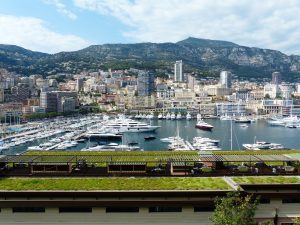
In efforts to continue the work against global warming, the Prince Albert II Foundation joined together with the United Nations Foundation to promote a diary for global warming on September 27, 2007. To continue Monaco’s work against climate change, Monaco was the hosting nation of the UNEP Administration Council Meeting that took place in February 21, 2008, where the Prince Albert II of Monaco Foundation together with the UN Foundation and the Madrid Club signed a partnership which was an agreement to join political powers to fight against climate change. Albert II’s work against climate changed continued on June 3rd, 2008 when Prince Albert II attended the OECD Forum, which had a focus on Climate Change, Growth and Stability.
The first summit meeting of Heads of State and Government took place on July 13th, 2008 with the plan of launching The Union for the Mediterranean.This took place at the Grand Palais in Paris, where Prince Albert II was present.
Albert went international on October 7th, 2008 when he visited Barcelona to attend the IUCN World Conservation Congress. Albert was then greeted by H.R.H. Prince Felipe of Spain.
Prince Albert continued his work with global warming and the environment through an international conference between November 10th and 11 in 2008. This was a conference to find solutions to the challenge of environmental changes, arranged by the French Presidency of the European Union, together with the Principality of Monaco.
Furthermore, Albert visited the European Parliament in Brussels on February 12th, 2009 to attend the “Peace with Water” Conference.
Prince Albert II was on June 19th, 2009 awarded with the ‘Commandeur de l’Ordre des Palmes Académiques’ award from Mr. Xavier Darcos.
Prince Albert II continued to work on the international relationships of Monaco by visiting Rome on October 16th, 2009 and was received by His Holiness Pope Benedict XVI in front of a private audience in the Vatican. On October 19th in 2009, Albert visited the UN. He did this to attend the 21st plenary session of the General Assembly. This assembly welcomed the International Olympic Committee (IOC), and the meeting had the title “Sport for Peace and Development: building a peaceful and better world through sport and the Olympic ideals”.
Prince Albert II of Monaco gained recognition for his active work with environmental questions, and on October 20th, 2009, he received the Teddy Roosevelt Medal. A big day in the history of Monaco.
To further work with environmental questions and the future of clean energy, H.S.H. Prince Albert II of Monaco attended on January 21st, 2010 the “World Future Energy Summit” which took place in Abu Dhabi. The prince inaugurated the 39th Congress of the Mediterranean Science Commission (CIESM) in Venice. The event took place on May 10 in 2010.
Prince Albert came to marry Miss Charlene Wittstock, and their marriage took place on July 1st-2 in 2011. Accordingly, Miss Charlene Wittstock became H.S.H. Princess Charlene of Monaco.
In Monaco, the official language is French, but Italian and English are also commonly spoken. Monegasque, which is a language which derived from French and Italian is spoken by the native residents of Monaco. There are, however, only about 22 percent of the population of Monaco which has a direct Monegasque descent.
The Monegasque flag – the Drapeau de Monaco has two equal horizontal bands of red and white with red on top and white beneath. These have been the heraldic colors of the House of Grimaldi since 1339. The flag has the state seal as well as the emblem of the House of Grimaldi, which is made up of a shield with red and white diamonds flanked by two monks holding swords that points upward, with a crown draped with red clothing the background.

The monks represent the legend of François Grimaldi, who, as mentioned, seized control over the Rocks of Monaco and the fortress buy disguising himself as a monk during the night, something that would eventually lead to the eviction of the conviction of the Grimaldi family for 30 years. The traditional flag of Monaco described was used during the principality’s early years.
The bicolor which can be found in today’s flag was adopted on April 4, 1881, under the reign of Prince Charles III.
Today, the flag of Monaco is identical to the flag of Indonesia graphically, with just small differences between the dimension ratio which can cause some confusion.
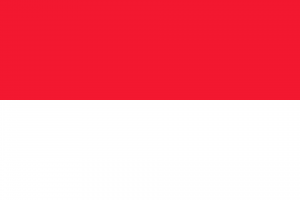
Despite Monaco being so small, it’s safe to say that the history of Monaco is rich. And that is what has made Monaco into what you know it as today.
What did you find most interesting about the history of Monaco?



